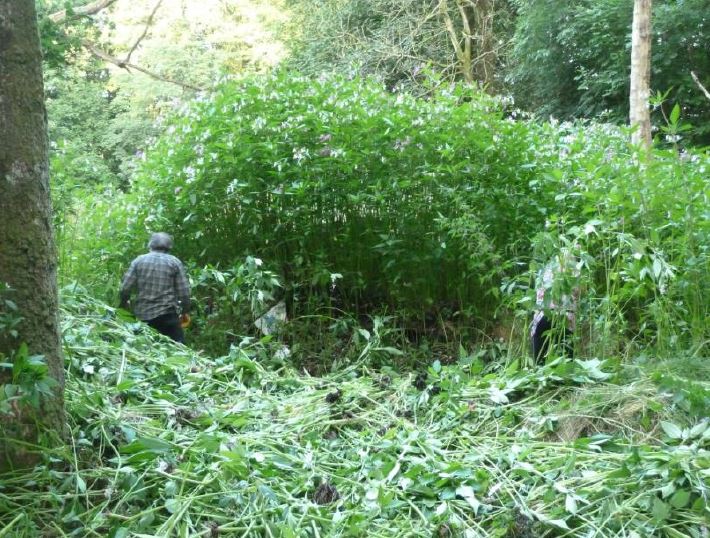The Victorian era was famed for exploration and this included the so-called plant-hunters, who roamed the world in search of ornamental plants, fruits, vegetables and medicines. However, some of their finds now cause problems in the form of invasive plant species, more colourfully known as alien invaders.
Whilst some finds are now popular with gardeners, such as honeysuckle, anemones and clematis, invasive types can crowd out native species, affect rivers and damage roads and buildings. Examples include the Japanese Knotweed and Giant Hogweed from Asia, and the amusingly named American Skunk Cabbage.
Himalayan Balsam
My first encounter, though, was at a ‘balsam-bashing’ event for volunteers organized by the South Cumbria Rivers Trust. The target for the day was Himalayan Balsam, which as the name suggests is native to the west and central Himalaya.
The first specimens were imported in 1839 by the British botanist, John Royle, who perhaps thought that its leafy green stems and delicate trumpet-shaped pink-purple flowers would make it an attractive ornamental plant.
As we now know though, its pods explode at the slightest touch to produce hundreds of seeds that can travel miles by air or water, colonizing even the thinnest of soils and pushing aside local species.
It also causes damage to river banks with knock-on effects from the sediment that flows into the water, affecting spawning grounds and the plants and insects on which fish feed.
Some specimens reach heights of several metres but most have such shallow roots that they can be pulled out of the ground by hand. The roots then need to be broken off and the pieces left to dry out, after which they cause no further harm.
Controlling invasive plant species
Whilst dealing with balsam is straightforward, some species such as knotweed and hogweed often require a more aggressive approach, using a fork and spade and excavators in some cases. Herbicides are also used although typically volunteers don’t get involved in that aspect due to the health and pollution risks.
So, once lockdown ends, if you would like some enjoyable outdoor exercise in good company, most River Trusts organize regular work parties to help remove invasive plant species. Sessions typically attract a wide mix of people, including local residents who want to give something back and people who see a ‘green gym’ as a pleasant alternative to the real thing.
To find out more, get in touch with your local Rivers Trust (www.theriverstrust.org).
If you are interested to learn more about wildlife and the environment in northwest England, see these books on The Mersey Estuary in Liverpool, Wirral and Cheshire and The Cumbria and Lake District Coast.

